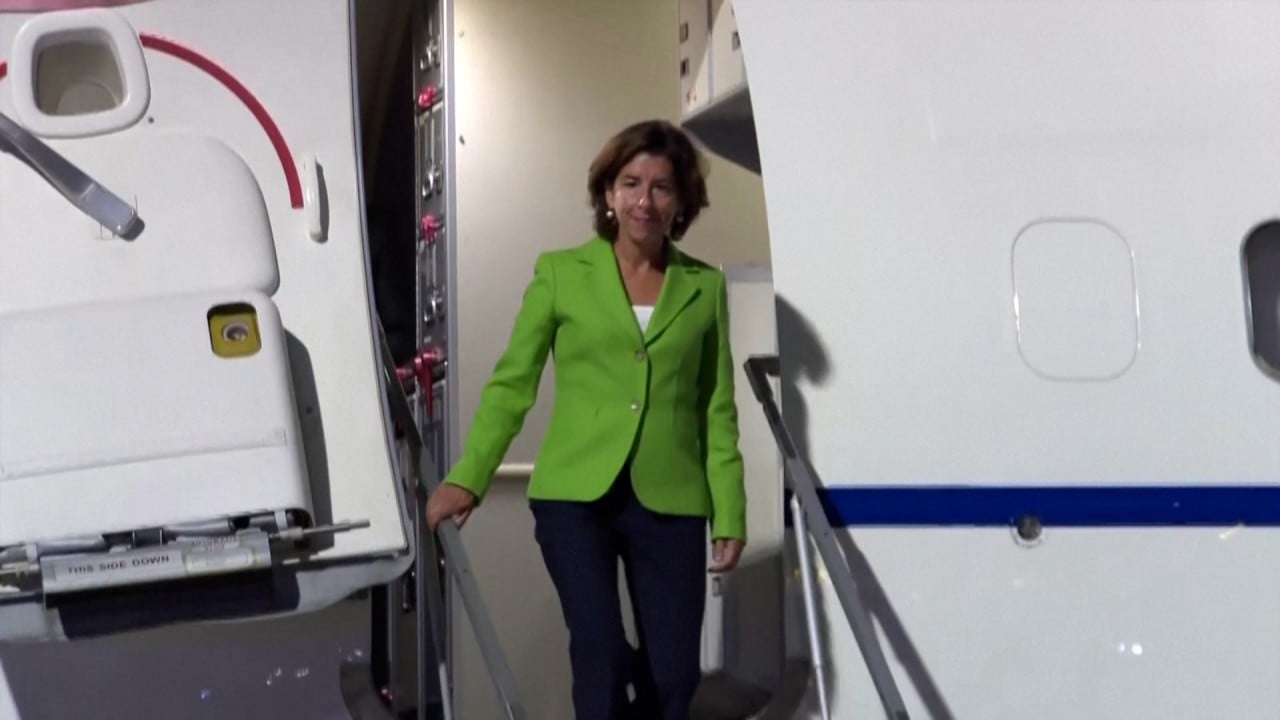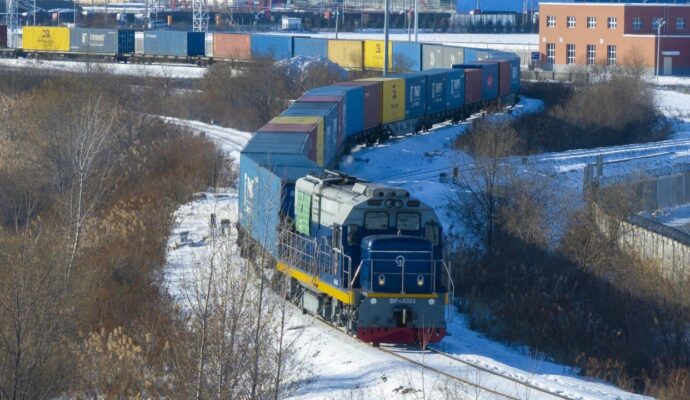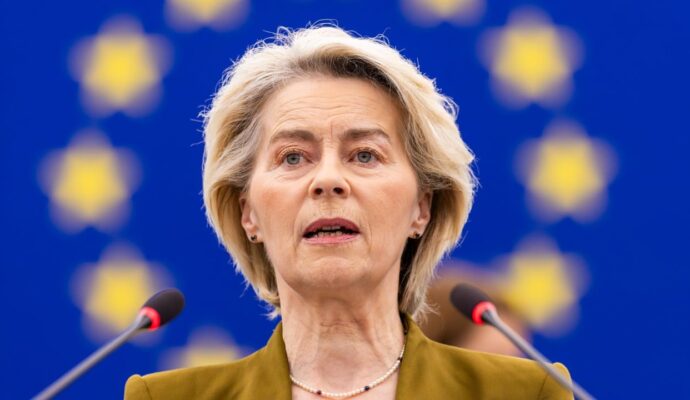Raimondo also met Vice-Premier He Lifeng on Tuesday during her second full day of talks with senior officials in Beijing and called on China to address what she termed unfair subsidies, bias toward foreign companies and weak intellectual property protections.
On Monday, Washington and Beijing took a step toward managing bilateral tensions by setting up a joint economic working group for the first time in nearly three years of Joe Biden’s presidency.
Advertisement
However, analysts remain sceptical about whether commercial, trade and investment problems can be substantially alleviated, and if mutual trust can be rebuilt.
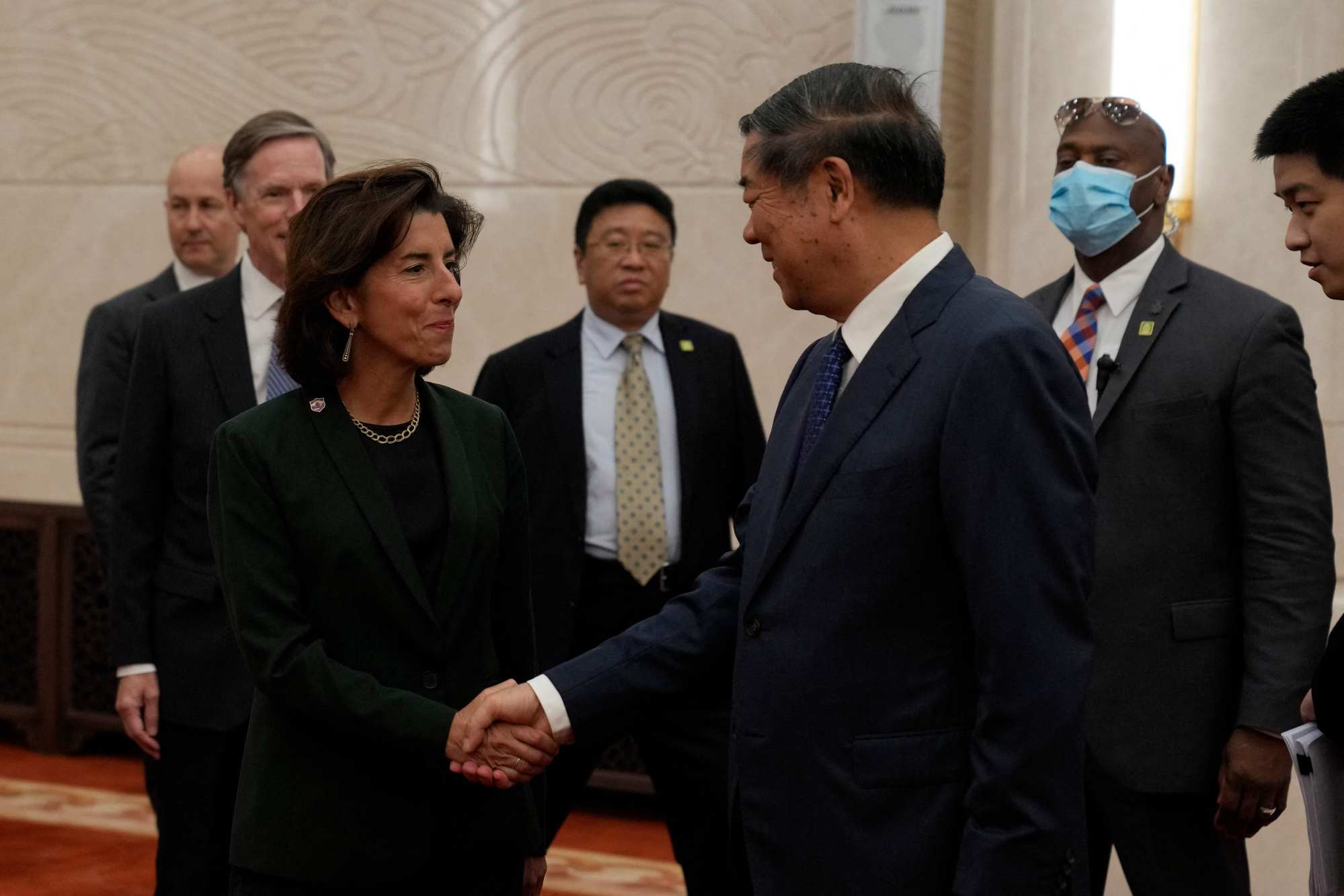
The commercial, trade and investment group is to meet twice a year at the vice-ministerial level, with the first session set to take place in Washington in early 2024.
Another group focused on export controls held at the assistant secretary level, referred to as an information exchange mechanism, started on Tuesday at the Ministry of Commerce in Beijing.
Advertisement
But the creation of working groups and mechanisms will not lead to overly optimistic conclusions, with the US “small yard, high fence” approach to China on critical technologies still causing damage, analysts said.
The tone has changed, but it’s still unsure [if they will lead to] practical changes
“The tone has changed, but it’s still unsure [if they will lead to] practical changes,” said Lu Xiang, a US-China relations expert at the Chinese Academy of Social Sciences.
Advertisement
“The American narrative is about de-risking. But the standards of de-risking and decoupling can clash with each other,” he said. “If the de-risking area broadens, it will lead to the effect of decoupling, and this needs to be resolved.”
More engagements are in the pipeline: both sides agreed to hold a high-level summit on tourism in the first half of next year after Raimondo met Chinese tourism minister Hu Heping on Tuesday.
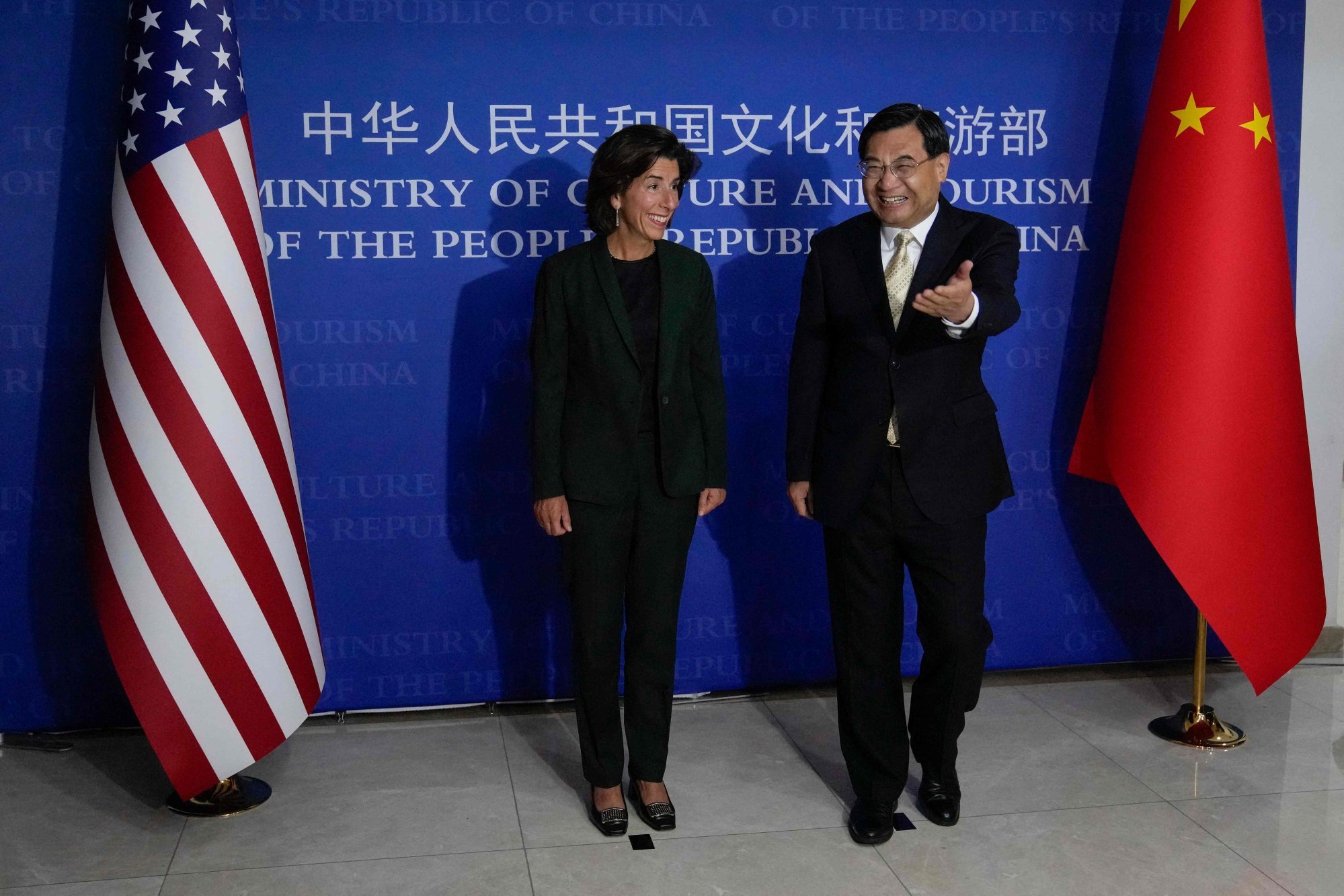
Hu called on the US to help increase people-to-people contact, direct flights and tourism, calling on Washington to ease US visa restrictions and stop “unreasonable interrogations and harassment” of Chinese citizens.
Advertisement
Raimondo, who is believed to be playing a bigger role in the Biden administration’s China trade policy, will conclude her four-day trip in Shanghai, where she will attend a women’s conference and is expected to visit Boeing’s joint venture, New York University Shanghai and Disneyland before heading back to the US on Wednesday evening.
Her trip has also been widely expected to prepare for a possible meeting between Chinese President Xi Jinping and US President Biden later this year in the US.
“President Biden asked me to come here to convey the message that we do not seek to decouple,” Raimondo told Li on Tuesday, according to an Associated Press video feed of remarks ahead of a mostly closed-door meeting.
For China, this is really a step to cool tensions rather than to get anything out of it
However, she also said on Tuesday, according to the US readout, that Washington would not compromise on national security.
Advertisement
Louise Loo, lead economist at Oxford Economics, said: “For China, this is really a step to cool tensions rather than to get anything out of it.”
“When it comes more to broader decoupling, I think they’ll try to avoid it,” given the headwinds now facing both economies, Loo added.
China, though, has already concluded that US export and investment restrictions are intended to block China’s rise, said Stephen Olson, a senior fellow at the Hinrich Foundation.
“The export control enforcement information exchange could be helpful in clarifying some technical issues, but the real problem is not a lack of understanding … and there is no information that the US could ‘share’ that would fundamentally alter China’s beliefs,” Olson said.
He added that “profoundly different economic systems” mean that “there is no basis to expect [the commercial, trade and investment issues working group] to find any magic bullet solutions that previous consultations and negotiations failed to find”.
Last week, the Bureau of Industry and Security within the US Commerce Department lifted export control restrictions on 27 Chinese entities by removing the firms from its so-called unverified list.
But overall, the US has increased restrictions on China’s access to advanced technologies in recent years, highlighted by Biden’s executive order this month that plans to restrict US investment in Chinese companies covering semiconductors and micro electronics, quantum information technologies and certain artificial intelligence systems.
I don’t think the Biden administration would like to undertake any moves that could be weaponised by their political opponents
“The best that could be hoped for would be the lifting of US restrictions on Huawei and other Chinese firms of strategic importance for the Chinese economy,” said Alfredo Montufar-Helu, the head of the China Centre for Economics and Business at the Conference Board.
“But, in my view, the likelihood for this to happen remains low given the US political situation.
“In the run-up to next year’s presidential elections, I don’t think the Biden administration would like to undertake any moves that could be weaponised by their political opponents.”
Shenzhen-based Huawei Technologies has been hit by US sanctions in the past few years as technology rivalry intensified amid concerns about the company’s ties to the Chinese military.
The Trump administration added Huawei to an export blacklist on national security grounds in 2019 before tightening trade restrictions in August 2020, covering access to semiconductors developed or produced using US technology.
The Biden administration has also maintained the Section 301 punitive tariffs on Chinese products the Trump administration instituted in 2018 and 2019.
Removal of the tariffs on the thousands of imports from China valued at around US$370 billion would be “the simplest and easiest issue to be corrected by the American government”, Lu of the Chinese Academy of Social Sciences said.
This would show a willingness for a substantial improvement in bilateral trade relations, he added.
The litmus test will be whether Raimondo can deliver concrete outcomes by the end of her trip
“The litmus test will be whether Raimondo can deliver concrete outcomes by the end of her trip,” Lu said.
The two countries have increased their communications this year. In the last three months, US Secretary of State Antony Blinken, Treasury Secretary Janet Yellen and special climate envoy John Kerry have travelled to China for talks.
“If Raimondo’s visit ends with nothing more than statements on both sides that they want a healthy trade relationship and announcements of new discussion formats, it will appear the Biden administration gained nothing substantial from the fee it paid to gain this meeting, which was to suddenly remove the export controls from 27 Chinese companies,” said Denny Roy, a senior fellow at the East-West Centre in Hawaii.
Additional reporting by Mark Magnier and Amber Wang
Advertisement
